Exploring the Types of Home Pollutants
It is no secret that the home's interior air is two to five times more hazardous than the outdoor air. Breathing polluted air harms comfort and overall well-being. Indoor air pollution has emerged as a pressing issue in recent years. Research shows that an average individual spends 90% of the time indoors, making them vulnerable to accompanying long-term and short-term health risks.
The air in our homes can get polluted from several sources. Understanding the common home contaminants can help homeowners create a healthy and safe environment for themselves and their families. Keep reading to know which factors can make the home air unsafe:
Biological pollutants
Biological pollutants are prevalent in damp areas and can cause severe health issues. Common biological pollutants include mold, mildew, mites, virus, bacteria, pet dander and saliva, dust, pollen, soil, and bugs. These can trigger asthma, allergies, and other respiratory illnesses. Excessive moisture in some home areas creates an uncomfortable living environment, damages a home structure, and causes biological pollutants to thrive.
To eliminate biological pollutants, take steps to control humidity inside the home and improve air quality, such as installing:
Dehumidifiers
Ductless air conditioning systems
Air filtration products
Also, perform regular maintenance of the heating and cooling units.
Tobacco smoke
Another significant type of home pollutant includes tobacco smoke or second-hand smoke, which results in thousands of deaths in the United States every year. Cigarette or cigar smoke contains several carcinogens and chemicals known to cause cancer and heart diseases. Even when someone else is smoking tobacco in the house, only inhaling the smoke can prove detrimental to young children. Second-hand smoke can cause severe asthma, respiratory infections, ear issues and increases the risk of sudden infant death syndrome.
Radon
Radon is a radioactive, invisible, and odorless gas, making it hard to detect without testing. Radon is a naturally-generated gas in the soil and can make its way inside the home through cracks, gaps, and holes and becomes trapped indoors. Prolonged radon exposure increases the risk of lung cancer. In fact, after smoking, radon is the second leading reason behind lung cancer in the United States. Homeowners can use testing kits to identify the radon levels in their houses.
VOCs
Volatile Organic Compounds or VOCs, present in several household products, are one of the primary types of home pollutants. Their concentration is higher indoors than outdoors. Popular sources include paints, aerosol sprays, pesticides, disinfectants, varnishes, deodorizers, perfumes, synthetic fragrances, solvents, air fresheners, cosmetic products, furniture, building materials, degreasers, printers, and fuel products. While some VOCs are nothing but a nuisance, others like formaldehyde pose a significant health threat.
Combustion products
Several home appliances, like furnaces, stoves, fireplaces, water heaters, and dryers, use fuel to operate. When unvented or not vented properly, they can release hazardous gases like carbon monoxide, nitrogen dioxide, formaldehyde, and particulate matter, responsible for causing chronic health issues.
Other home pollutants include lead, asbestos, particulates, pesticides, and dry-cleaned clothes.
Get expert assistance
It is best to call a professional to manage home pollutants. A local indoor air quality service company can assess the hazardous contaminants present in the home and suggest adequate steps to combat them to improve the indoor air quality.
CMB Air specializes in offering services like indoor air quality, duct fogging, duct repair and maintenance, thermostat, and iWave air purifier. No hidden charges and fees. Call (813) 447-1443 today for consultation.

